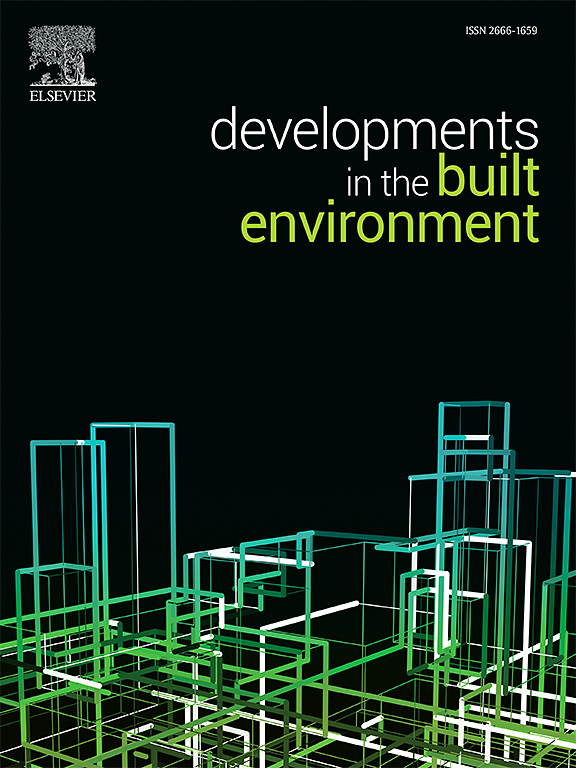Life cycle assessment of construction and demolition waste upcycling: A critical review of studies from 2010 to 2025
IF 8.2
2区 工程技术
Q1 CONSTRUCTION & BUILDING TECHNOLOGY
引用次数: 0
Abstract
Upcycling construction and demolition waste (CDW) not only enhances material performance and functional value, but also offers environmental co-benefits, thereby promoting a circular economy within the construction industry. Life Cycle Assessment (LCA) has gained widespread recognition as an effective tool for evaluating the environmental impacts of CDW upcycling. Although the body of research in this area has expanded in recent years, a systematic understanding of how LCA is applied across different upcycling practices remains limited. To address this gap, this paper aims to examine how LCA has been used to evaluate the environmental impacts of CDW upcycling. A systematic literature review was conducted, covering 46 studies published between 2010 and 2025, identified through searches in Scopus and the Web of Science Core Collection. The review reveals that recycled concrete waste materials are the primary focus of upcycling research. Among the three main upcycling methods, physical processing is the most commonly used due to its fundamental role in material transformation. A significant proportion of upcycled CDW materials is applied in structural applications, particularly as load-bearing components in buildings and infrastructure. Since upcycling technologies are still in the developmental stage, existing studies mainly focus on the environmental benefits from resource extraction to production, with particular emphasis on the impacts of CDW upcycling on air pollution and climate change. Accordingly, this study develops a Structural Framework for Upcycling and a Technical Framework for LCA, aiming to systematically integrate LCA research for CDW upcycling. Future research should concentrate on three key areas: (1) establishing a comprehensive LCA framework, (2) optimizing the sustainability of upcycling processes, and (3) improving the accuracy of LCA calculations. This study provides a valuable roadmap for researchers and practitioners to enhance LCA applications in CDW upcycling, thereby accelerating the transition toward a circular economy in the construction sector.
建筑和拆除垃圾升级回收的生命周期评估:2010 - 2025年研究综述
将建筑及拆卸废物升级再造,不但可提高材料的性能和功能价值,还可带来环保效益,从而在建造业内推动循环经济。生命周期评价(LCA)作为评价CDW升级回收对环境影响的有效工具得到了广泛的认可。尽管近年来这一领域的研究已经扩大,但对LCA如何在不同的升级回收实践中应用的系统理解仍然有限。为了解决这一差距,本文旨在研究如何使用LCA来评估CDW升级回收的环境影响。我们进行了系统的文献综述,涵盖了2010年至2025年间发表的46项研究,这些研究是通过在Scopus和Web of Science Core Collection中搜索确定的。综述表明,再生混凝土废料是升级利用研究的重点。在三种主要的升级回收方法中,物理处理是最常用的,因为它在材料转化中起着基本的作用。相当一部分升级再造的CDW材料用于结构应用,特别是作为建筑物和基础设施的承重部件。由于升级回收技术尚处于发展阶段,现有研究主要集中在从资源开采到生产的环境效益上,特别侧重于CDW升级回收对大气污染和气候变化的影响。在此基础上,本研究构建了升级再造的结构框架和LCA的技术框架,旨在将LCA研究与CDW升级再造相结合。未来的研究应集中在三个关键领域:(1)建立全面的LCA框架;(2)优化升级回收过程的可持续性;(3)提高LCA计算的准确性。本研究为研究人员和实践者提供了一个有价值的路线图,以加强LCA在CDW升级回收中的应用,从而加速建筑行业向循环经济的过渡。
本文章由计算机程序翻译,如有差异,请以英文原文为准。
求助全文
约1分钟内获得全文
求助全文
来源期刊

Developments in the Built Environment
Multiple-
CiteScore
7.40
自引率
1.20%
发文量
31
审稿时长
22 days
期刊介绍:
Developments in the Built Environment (DIBE) is a recently established peer-reviewed gold open access journal, ensuring that all accepted articles are permanently and freely accessible. Focused on civil engineering and the built environment, DIBE publishes original papers and short communications. Encompassing topics such as construction materials and building sustainability, the journal adopts a holistic approach with the aim of benefiting the community.
 求助内容:
求助内容: 应助结果提醒方式:
应助结果提醒方式:


